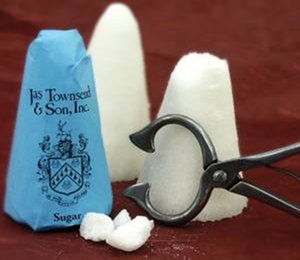Just as today, 18th Century bakers put a lot of importance on the type of ingredients they used for their bread recipes. Specific sources for water were identified, including water from rivers, fountains, wells or the collection of rain. Bakers from Gonesse, France said that rain water was best for its particular natural properties. Gonesse is in the northeastern suburbs of France, home of cuisine extraordinaire, about 10 miles from Paris. So, they ought to know!

These bakers said that you must use the "lightest of water, because it works itself better into the clumps of flour mixed with the leaven. Rain water makes the dough ferment and rise, because it is lighter than that of fountains or rivers." Now, I don't know about that, but in the 1700's, I guess it made sense.
Yeast, in those days, was always "brewer's yeast", which is a type of fungus (saccharomyces cervisiae), used to brew beer as well as bake some particular breads. This yeast was considered "artificial", as opposed to "old dough" that you actually reserved a portion of fully developed dough before shaping loaves of bread, and retaining it in a covered container to use in the next batch, and then the next. This is a starter, as it were, somewhat like the starters used in sour dough bread, where some portion is reserved for the next time one decides to bake.
Of course, many 18th Century bakers used beer in exchange for water in recipes. The 1771 Encyclopedia Britannica includes the following technique for bread making:
By the way, the Celts are rumored to have introduced beer into their dough for an airier loaf. This goes back to the Iron Age.“The meal, ground and bolted, is put into a trough, and to every bushel are poured in about three pints of warm ale, with barm and salt to season it: this is kneaded well together with the hands through the brake; or for want thereof, with the feet, through a cloth; after which, having lain an hour to swell, it is moulded into manchets, which scorched in the middle, and pricked at the top, to give room to rise, are baked in the oven by a gentle fire.”

Another important baking ingredient is sugar, which was extremely expensive at the time, often called "white gold". In the 18th Century it was a product of the development of thousands of sugar plantations in South, Central and North America, giving rise to the African slave trade with over 12 million slaves shipped to various locations around the globe. The "sugarloaf" was the traditional form in which the refined sugar was distributed and sold until cubes were introduced in the 19th Century. A tall cone with rounded top was the shape, achieved when, at final boiling (for refining), the sugar was poured into large conical molds of earthenware or iron. The dark, molasses based sugar drained through the bottom of the mold, leaving the white to remain. When cool, the cones were wrapped in paper, and sold. To use, one had to chip away the sugar from the cone with tongs.
As they say, it's the quality of the ingredients that make for the best cuisine!
No comments:
Post a Comment